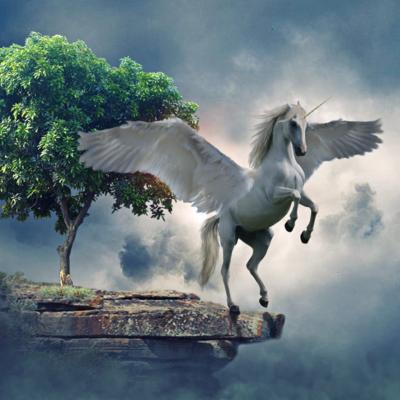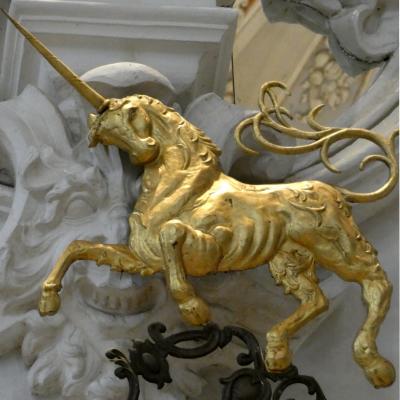Medieval literature is filled with symbolism and fantastical creatures that reflect the beliefs, values, and fears of a time marked by profound social and cultural transformations. Among these creatures, unicorns stand out as enigmatic beings that have captured the imagination of writers and readers throughout the centuries. These mythical animals not only represent purity and innocence, but they are also symbols of an ideal of beauty and perfection that transcends the mundane. The figure of the unicorn in medieval literature is multifaceted, revealing secrets that go far beyond its enchanting appearance.
Unicorns appear in various literary works, from poems to philosophical treatises, and their presence is often associated with narratives of heroism and spiritual quests. Through their representation, medieval authors explored themes such as the struggle between good and evil, the search for truth, and the importance of virtue. In this article, we will uncover the secrets of unicorns in medieval literature, analyzing how these fantastic beings function within narratives and what the advantages are of understanding their symbolism. Additionally, we will discuss how unicorns symbolize purity and innocence in medieval mythology, bringing to light the relevance of these themes for understanding medieval culture.

How Unicorns Function in Medieval Literature
Unicorns in medieval literature function as a powerful symbol, representing ideals that go beyond the simple description of a mythical being. In many stories, the unicorn is depicted as a creature that can only be tamed by a virgin, emphasizing its association with purity and innocence. This characteristic is not just a narrative detail, but a reflection of medieval beliefs about feminine virtue and the importance of chastity. Thus, the unicorn becomes a symbol of protection and a guardian of the moral values of the time.
Moreover, unicorns frequently appear in contexts of quest and adventure. They are often the goal of heroes embarking on epic journeys, seeking not only the capture of the creature but also personal transformation. This quest for the unicorn can be seen as a metaphor for the search for truth and self-knowledge, central themes in medieval literature. The unicorn, therefore, is not just a being to be hunted, but a representation of the ideal life that heroes aspire to attain.
The presence of unicorns also serves to contrast the real world with the ideal world. In many tales, the capture of the unicorn is impossible, symbolizing the search for something that is beyond human reach. This idea that the unicorn represents an unattainable ideal is reinforced by its evasive nature and the difficulty of finding it. Medieval authors, by introducing this creature into their works, provoke reflection on human limitations and the importance of aspiring to higher values, even if those values are difficult to attain.
Finally, unicorns in medieval literature function as a link between the physical and spiritual worlds. It was believed that the presence of a unicorn could purify environments and people, and this belief was reflected in narratives. Authors often used the unicorn as a means to explore philosophical and spiritual issues, encouraging readers to ponder the nature of purity, virtue, and the search for a higher purpose in life. Thus, unicorns become more than mere creatures; they are symbols of a constant search for transcendence.
Advantages of Understanding the Secrets of Unicorns in Medieval Literature

Understanding the secrets of unicorns in medieval literature offers a series of advantages that go beyond the simple pleasure of reading. First, this understanding allows for a deeper appreciation of the literary works of the time. By recognizing the symbolism of the unicorn, readers can see how authors used this figure to convey complex messages about morality, virtue, and the struggle between good and evil. This perspective enriches the reading experience and provides a new layer of meaning to the stories.
Furthermore, studying unicorns in medieval literature can provide insights into the society of the time. Unicorns are often associated with ideals of purity and innocence, reflecting the social and cultural norms that prevailed in the Middle Ages. By analyzing how this creature is portrayed in literary works, scholars can gain a better understanding of the beliefs and values that shaped the daily lives of people. This analysis can reveal much about societal expectations regarding gender, morality, and the pursuit of higher ideals.
Another advantage of exploring the secrets of unicorns is the opportunity to reflect on the relevance of these themes in the present day. Although modern society has evolved, the concepts of purity, innocence, and the search for meaning still resonate with many people. Through the figure of the unicorn, readers can connect with universal issues that transcend time and space. This makes medieval literature not only a field of historical study but also a source of reflection on the human condition.
Finally, understanding unicorns in medieval literature can inspire creativity and imagination. The rich symbolism associated with these mythical beings can serve as a source of inspiration for contemporary writers, artists, and creators. By exploring the complexity of unicorns in medieval narratives, it is possible to find new ways to approach ancient and universal themes, creating works that converse with both the past and the present. Thus, the study of unicorns not only enriches literary understanding but also fuels creativity and innovation.
How Unicorns Symbolize Purity and Innocence in Medieval Mythology
Unicorns are often seen as symbols of purity and innocence in medieval mythology, and this representation is evidenced in various literary and artistic works of the time. It was believed that the presence of a unicorn had the power to purify environments and people, making them free from impurity and evil. This association with purity is one of the reasons why unicorns are frequently depicted in contexts involving female figures, especially virgins. This connection is not just a literary convention but reflects the social beliefs of the time about feminine virtue.
The purity of the unicorn is often symbolized by its physical appearance. The white color of its coat, the elegant shape of its body, and the beauty of its horn are characteristics that evoke the idea of perfection and innocence. In medieval art, unicorns are often depicted in scenes that emphasize their pure nature, such as in tapestries and illuminated manuscripts showing the unicorn amidst flowers and idyllic landscapes. These visual representations reinforce the idea that the unicorn is a being that transcends the mundane, inhabiting a realm of beauty and virtue.
Moreover, the unicorn’s narrative often involves themes of redemption and transformation. In many stories, protagonists who encounter a unicorn are led to confront their own flaws and imperfections. The search for the unicorn, then, becomes a metaphor for the pursuit of spiritual and moral purification. This journey of self-discovery and transformation is a recurring theme in medieval literature, and the unicorn serves as a guide leading characters toward a higher ideal.
Finally, the figure of the unicorn can also be seen as a critique of the society of the time. By idealizing purity and innocence, medieval authors often pointed out the flaws and hypocrisies of the society they lived in. The unicorn, as a symbol of virtue, serves to highlight the importance of aspiring to higher values, even in a world full of corruption and moral decay. This duality between the ideal and reality is one of the reasons why unicorns continue to fascinate and inspire readers and scholars to this day.
Did You Enjoy Learning About the Secrets of Unicorns in Medieval Literature?

Unicorns in medieval literature are much more than mere fantastical creatures; they are complex symbols that reflect the ideals of purity, innocence, and spiritual quest of the time. By uncovering these secrets, you can discover a world rich in meanings that still resonate in contemporary society. Medieval literature offers a window into the beliefs and values of a past time, and unicorns, as central figures, invite us to reflect on our own quest for virtue and meaning.
We hope this article has sparked your interest in unicorns and medieval literature. These mythical beings continue to inspire and fascinate, and their symbolism remains relevant in our current world. By delving into the secrets of unicorns, you can gain new perspectives on the human condition and the eternal search for beauty and truth.
Frequently Asked Questions
What are unicorns in medieval literature?
Unicorns are magical and mythical creatures. They appear in many books from the Middle Ages. They are typically depicted as white horses with a horn on their forehead.
What are the secrets of unicorns in medieval literature?
The secrets of unicorns in medieval literature include symbolism of purity and innocence. They are often linked to virgins and the protection of good.
Why were unicorns important in the Middle Ages?
Unicorns were a symbol of hope and beauty. They represented the search for truth and the ideal of a perfect life.
How are unicorns portrayed in medieval stories?
In many stories, they are creatures that are hard to find. Only those pure of heart could capture them. This makes their stories even more magical.
Where can I learn more about the secrets of unicorns in medieval literature?
You can search for books on medieval mythology and art. Look in libraries or on the internet. Often, the magic of unicorns is in every page!
